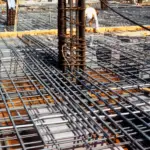Construction experts always show a keen interest in comprehending the various procurement methods employed in the industry. Analyzing the requirements and characteristics of a procurement system is crucial for these professionals.
The core objective of such a system lies in identifying the responsibilities and tasks of each participant involved in a signed project.
Before delving into the types of procurement, one must understand the functions carried out in the construction industry and the parties involved.
Typically, five functions are involved in a project:
- Design
- Build
- Management
- Finance
- Operation
The procurement system plays a vital role in defining the scope or responsibilities of each party, including the client, consultant, and contractor. In simpler terms, the procurement system is a crucial term to understand the properties of a construction contract.
Construction procurement refers to the process of obtaining the necessary goods, services, and labor essential for building structures or infrastructure.
There are various methods for procurement, each with its own set of advantages and drawbacks.
Let’s explore the four primary methods in more detail:

Traditional Procurement (Design-Bid-Build):
Commonly known as design-bid-build, this method involves the client hiring a design team to create building plans.
Like Us on Facebook!
These plans are then put out for tender, and construction companies bid on them. The contract is typically awarded to the lowest bidder.
Subscribe Us on YouTube!
Traditional procurement offers a clear contract outlining the project’s scope, budget, and timeline, facilitating accurate cost estimation and risk assessment.
However, it can be slow and inflexible, requiring contract renegotiation for any design or budget changes.
In this method, the contractor’s responsibility is limited to construction. Design works and contract management are carried out by the consultant or engineer, while finance and operation are controlled by the client.
This procurement method is recommended for complex and comparatively large projects.
Design and Build Procurement:
In design and build procurement, a single contractor is hired by the client to manage both the design and construction phases.
This approach allows for quicker project completion and better cost control. The contractor oversees the entire project, ensuring it stays on schedule and within budget.
However, it may reduce the client’s control over the design phase, potentially prioritizing cost-saving measures over design quality.
Changes during construction can also be costly due to contract renegotiation.
Construction Management Procurement:
This method involves hiring a construction manager to oversee the project while separately contracting individual trades such as electrical, plumbing, and structural work.
It provides greater flexibility to the client in selecting individual trades. The construction manager coordinates the various trades, ensuring timely and budget-friendly project completion.
However, it can be more complex, requiring increased client oversight, and disputes between trades may need resolution by the client.
Public-Private Partnership (PPP):
PPP is a collaborative construction procurement method where the private sector partners with the public sector to finance, design, build, and operate a project.
While PPPs offer advantages like increased efficiency, faster project completion, and risk-sharing, they can be complex and demand meticulous planning.
It is essential to ensure that the project benefits both sectors, considering potential conflicts of interest, as the private sector may prioritize profit over public benefit.
Understanding the distinctions among these procurement methods enables clients to choose the one aligning best with their needs, fostering a successful construction project.
Joint Venture/Partnering:
This method aims to overcome barriers between parties in a contract by establishing a working environment based on mutual objectives, teamwork, trust, and risk-sharing. The success of this setup depends on a memorandum of understanding, making it challenging to identify responsibilities for each party.
Private Financing Initiative (PFI):
In this method, the contractor is solely responsible for all construction functions. After successful completion, the project is transferred to the owner. This is beneficial for clients without a robust financial background and is commonly used by the government in developing countries.
While various procurement methods exist in the construction industry, factors such as the complexity of the project, time management, and quality assurance should be considered for selecting the most suitable method.
In summary, the traditional method offers more quality assurance in complex projects, albeit consuming more time. The design and build method suits relatively smaller projects, while management contracting is suitable for projects identified on a package basis. Joint ventures are challenging due to the trust and mutual understanding required.
| Sr. No. | Method Name | Pros | Cons | Recommendations | Considerations |
|---|---|---|---|---|---|
| 1 | Traditional Procurement | – Clear contract outlining scope, budget, and timeline. – Accurate cost estimation and risk assessment. | – Slow and inflexible. – Requires contract renegotiation for changes. | – Suitable for complex and large projects. | – Potential for inflexibility and delays. |
| 2 | Design and Build Procurement | – Quicker project completion. – Better cost control. – Single contractor oversees design and construction. | – Reduced client control over design. – Costly changes during construction. | – Recommended for relatively smaller projects. | – Potential compromise on design quality. |
| 3 | Construction Management | – Greater flexibility for client in selecting trades. – Construction manager oversees trades for timely and budget-friendly completion. | – More complex and requires increased client oversight. – Disputes between trades may need client resolution. | – Suitable when client wants trade flexibility. | – Requires active client involvement and resolution of potential disputes. |
| 4 | Public-Private Partnership | – Increased efficiency and faster project completion. – Risk-sharing between public and private sectors. | – Complex and demands meticulous planning. – Potential for conflicts of interest. – Private sector may prioritize profit over public benefit. | – Ensure project benefits both sectors. | – Careful consideration of potential conflicts and alignment of interests. |
| 5 | Joint Venture/Partnering | – Overcomes barriers through mutual objectives and teamwork. – Based on trust and risk-sharing. | – Challenging to identify responsibilities. | – Requires a strong memorandum of understanding. | – High reliance on trust and understanding among parties. |
| 6 | Private Financing Initiative | – Contractor solely responsible for construction functions. – Project transferred to the owner after completion. | – Challenging for clients without a strong financial background. | – Beneficial for financially weaker clients. | – Consideration of potential financial risks. |
This table provides a summarized comparison of the pros, cons, recommendations, and considerations for each of the discussed construction procurement methods.
Conclusion
It is strongly recommended that the selection of a suitable procurement method is the first crucial step for the success of any construction project. Therefore, careful consideration should be given to this process.
Despite the availability of various forms of contracts and procurement methods, some construction professionals may find it challenging to grasp the differences. The analysis provided above aims to offer a clear picture of the procurement methods in the construction industry. Further discussions on suitable forms of contracts will be covered in the next article.


















